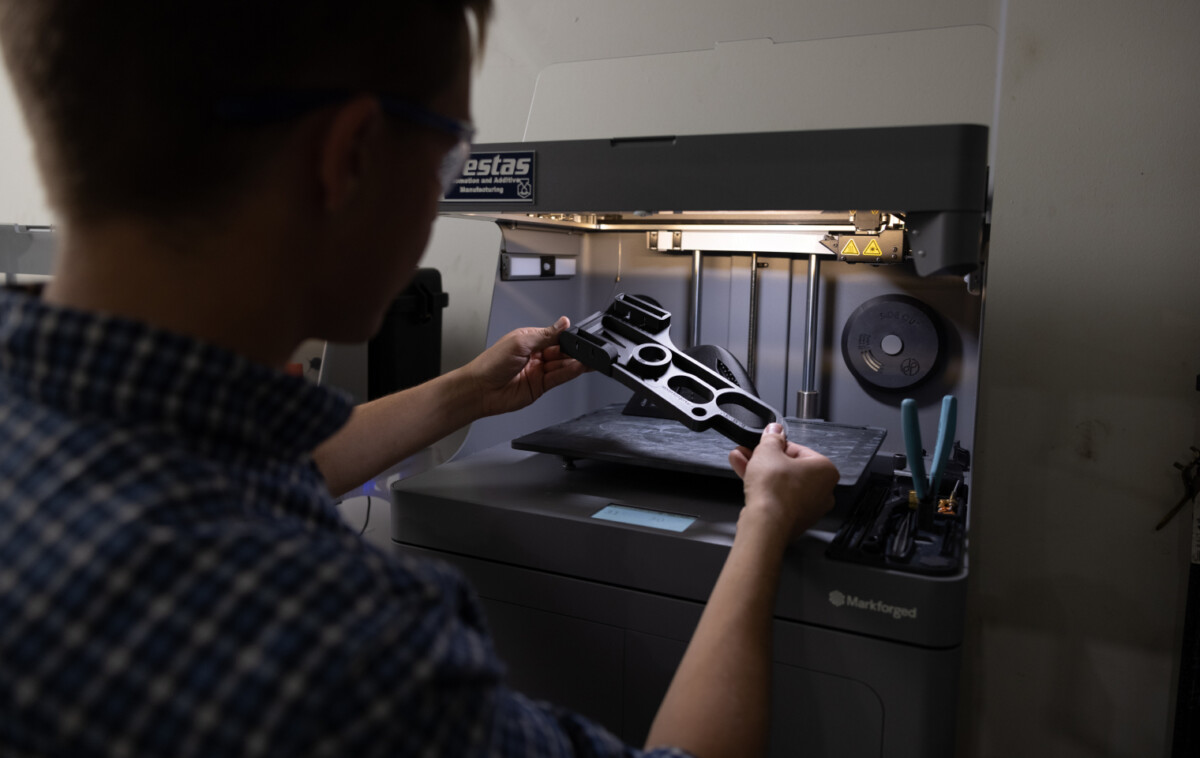New wind power installations in the U.S. decreased in 2021 as compared to 2020: nevertheless, the U.S. is still aiming for 20% of its electricity to be wind-powered by 2030. Meanwhile, China set a record for increased wind capacity in 2021. In fact, China’s wind power installations grew last year by an amount greater than the number of such installations achieved by any other country in the last five years.
In the European market, the conflict in Ukraine has strongly reinforced the collective desire to transition away from fossil fuels. Of course, this has done little to curb the E.U.’s short-term demand for oil and gas. However, internationally, the long-term picture still signals an ever-growing need across the continent (and around the globe) for significantly boosting the supply of all components involved in wind-generated electricity. And the world’s largest producer of wind turbines — the Danish firm Vestas — is using additive manufacturing (AM) to address the supply shortages that have plagued the wind industry since the beginning of the pandemic.
As it manages operations that span the entire planet (including over fifteen manufacturing plants), Vestas has seen firsthand how the last two years of supply chain disruptions can affect a business. Fortunately, in 2021, Vestas rolled out its direct digital manufacturing (DDM) program, powered by its utilization of a variety of Markforged products: the X7 and Onyx One 3D printers, the Eiger cloud-based digital repository, and the Blacksmith software system — collectively, referred to by Markforged as The Digital Forge platform.

Blacksmith digital part inspection verifies printed accuracy of the TC marking tool.
Vestas provides an ideal example of what it looks like, and what it means, to implement a digital supply chain for the renewable energy and additive manufacturing (AM) sectors alike. As Vestas’ principal engineer for AM and advanced concepts, Jeremy Haight, puts it, “Our approach is end-to-end. We provide the physical article in near real-time to a variety of places. It’s the closest thing to teleportation I think you can get.”

Vestas TC marking tool used to mark the root end of turbine blades to align pitch during installation.
Although Vestas has already stored over 2000 parts in the Eiger digital repository, two components that the company has highlighted as particular DDM success stories include top center (TC) marking tools, and lightning tip receptors. TC marking tools are used to make sure that turbine blades’ root ends are properly aligned. Using traditional manufacturing methods, these tools were originally made from metal only, and took up to five weeks to produce. Now, since Vestas is able to print the TC marking tools on-site, using Markforged’s nylon-based Onyx material, the production process only takes a few days, there’s no shipping time to take into consideration, and the end-result is 85% lighter.

Composite prototype of lightning tip receptor for wind turbine blades to reduce lightning strike damage.
Conventional methods for producing lightning tip receptors, which are used to reduce the damage to wind turbines caused by lightning, take at least 12 weeks. Moreover, traditionally manufactured lightning tip receptors are made from aluminum — the material affected by supply chain issues perhaps more so than any other in the last two years. The same component produced using AM, on the other hand, is made from copper, and can be finished in just two days. And again, as with the TC marking tools, one of the greatest advantages of using AM is the ability to produce the lightning tip receptors exactly where they’re needed.
To sum up, Vestas is an instructive example for any other company looking to use AM to create a digital supply chain for two main reasons. For one thing, it’s the leading manufacturer in one of the industries most detrimentally affected in the short-term by pandemic-related supply chain issues. For another, it’s in an industry that, equally, can help positively affect global supply chain issues in the long run, simply by aiding in humanity’s (very) gradual transition away from total dependence on fossil fuels.
Images courtesy of Markforged and Vestas
Subscribe to Our Email Newsletter
Stay up-to-date on all the latest news from the 3D printing industry and receive information and offers from third party vendors.
You May Also Like
Gorilla Sports GE’s First 3D Printed Titanium Cast
How do you help a gorilla with a broken arm? Sounds like the start of a bad joke a zookeeper might tell, but it’s an actual dilemma recently faced by...
Nylon 3D Printed Parts Made More Functional with Coatings & Colors
Parts 3D printed from polyamide (PA, Nylon) 12 using powder bed fusion (PBF) are a mainstay in the additive manufacturing (AM) industry. While post-finishing processes have improved the porosity of...
$25M to Back Sintavia’s Largest Expansion of Metal 3D Printing Capacity Since 2019
Sintavia, the digital manufacturing company specializing in mission-critical parts for strategic sectors, announced a $25 million investment to increase its production capacity, the largest expansion to its operations since 2019....
Velo3D Initiates Public Offering in a Bid to Strengthen Financial Foundations and Drive Future Growth
Velo3D (NYSE: VLD) has been among a number of publicly traded 3D printing firms that have attempted to weather the current macroeconomic climate. After posting a challenging financial report for 2023,...































